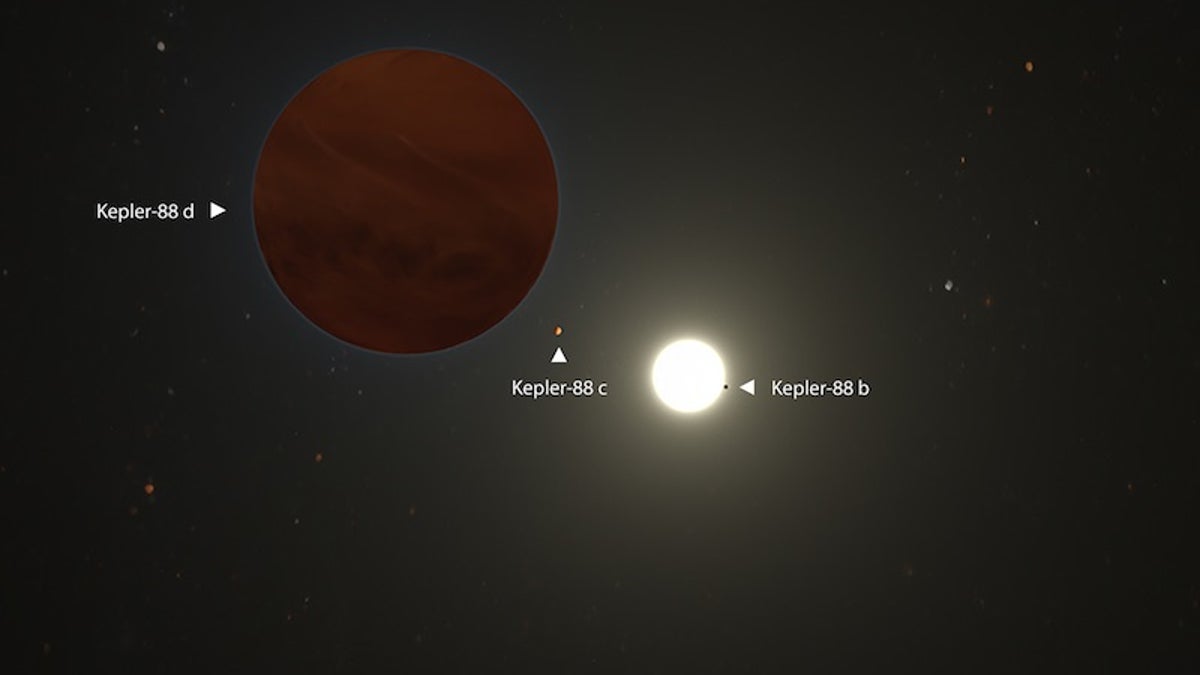Fox News Flash top headlines for May 4
Fox News Flash top headlines are here. Check out what's clicking on Foxnews.com.
A newly discovered exoplanet more than 1,200 light-years from Earth has three times the mass of Jupiter and is the new "king" of its solar system.
Known as Kepler-88 d, it replaces Kepler-88 c as the largest planet in the system. The planet orbits its star once every four years and has an elliptical orbit, researchers noted in a statement.
"At three times the mass of Jupiter, Kepler-88 d has likely been even more influential in the history of the Kepler-88 system than the so-called King, Kepler-88 c, which is only one Jupiter mass," said Dr. Lauren Weiss in the statement. "So maybe Kepler-88 d is the new supreme monarch of this planetary empire – the empress."

Artist's rendition of the Kepler-88 planetary system. Credit: W. M. Keck Observatory/Adam Makarenko
'DISAPPEARING' EXOPLANET MAY HAVE NEVER EXISTED, SCIENTISTS BELIEVE
The massive exoplanet, at just over 1,250 light-years from Earth, was found using six years' worth of data from W. M. Keck Observatory in Maunakea, Hawaii, the researchers added. A light-year, which measures distance in space, equals 6 trillion miles.
The Keppler-88 system has notoriety amongst astronomers because the other two planets, Kepler 88-b and Kepler 88-c, have "a bizarre and striking dynamic called mean motion resonance," with both planets orbiting the star in 11 and 22 days, respectively.
Kepler 88-b is smaller than Neptune, while Kepler 88-c is comparable in size to Jupiter, the largest planet in our solar system.
The discovery of Kepler 88-d can add to astronomers' understanding of the star system, given that massive planets can influence their respective solar systems.
NASA IMAGE DEPICTS 'EARTH-LIKE' EXOPLANET THAT COULD SUPPORT LIQUID WATER
In the past, they have been found to "promote the development of rocky planets and directed water-bearing comets toward them," the researchers added in the statement.
The research was published in the Astronomical Journal.

